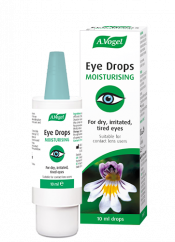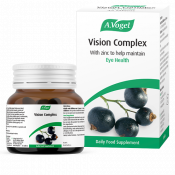Can computers cause dry eyes?
Straining your eyes at a computer screen can dry out the eyes. With a lack of tears, the result is insufficient oxygen in the eye, leading to eye pain and discomfort.
Let me explain this a little bit further.
The cornea is the transparent layer on the front of the eye that allows light to be transmitted to the back of the eye. The cornea must be healthy and transparent for vision to remain clear. To ensure that it is kept transparent, the cornea receives no blood supply and, instead, oxygen is dissolved through tears which then diffuse into the cornea.
Dry eyes that are the result of technology use will, therefore, damage the eye itself and the power of vision.

What is Computer Vision Syndrome?
A recent survey by Ofcom found that the average person in the UK spends more than a day a week online, which is twice as much as 10 years ago.1 This is very unhealthy for your eyes and can lead to Computer Vision Syndrome.
Computer Vision Syndrome (CVS) refers to pain and strain in the eye due to damage from a computer screen.
Research shows that computer-related eye problems are common – as much as 90% of people who work at a computer screen experience eye trouble.2
However, adults who work with computers are not the only ones who can develop CVS. Children who regularly use computers, phones and tablets can also suffer damage to the eye.
Research shows that children aged 5-16 spend an average of 6 and a half hours a day in front of a screen,3 whilst they are playing outside for an average of just over 4 hours a week, meaning the risk of developing eye issues is high.4
How can you protect your eyes if you stare at screens all day?
In a digital world, it is easy to forget that you are inflicting damage on your vision but the good news is that there are a few simple things you can do to keep your eyes protected whilst looking at computer screens.
Adjust your computer settings
Adjusting the display settings of your computer can help to reduce eye strain and fatigue.
- Brightness – To help relieve the strain on your eye, change the brightness of your screen. The brightness of the screen is correct if it matches the brightness of your surroundings.
- Text size and contrast - Increasing the size and style of your font will be easier on your eyes.
Blink continuously throughout the day!
We generally blink less when working at a computer screen, and even more so whilst looking at smartphone screens, so you may have to make a conscious effort to do this. Blinking is so important when working at a computer as it moistens the eyes, preventing dryness and irritation.
Minimise glare
You can attach an anti-glare screen protector to your computer, laptop and even smartphone screens to help reduce eye strain. You can also buy anti-glare glasses to wear while using screens, whether you need a prescription or not.
Call on a natural remedy
Euphrasia, also known as Eyebright, is a herb traditionally used for problems with the mucous membranes in the eye. The combination of anti-inflammatory and astringent properties makes it useful in treating acute or chronic inflammation of the eye.
Alternatively, you can try A.Vogel Eyebright which is taken internally to help with itchy or inflamed eyes.
Finally, to soothe dry eyes, you may wish to try A.Vogel Eye Drops, perfect for eyes that have spent all day staring into the abyss of a computer screen. These drops provide an instant soothing and moisturising effect.
Upgrade your display
Older monitors are more likely to cause CVS. Upgrade your display to an LCD monitor, which is similar to the screens used for laptops, as these types of screen are easier on the eyes.
Minimise your time on your phone
For prolonged computer use, the ideal size for a screen is at least 19 inches. Try cutting down on the time you spend looking at small screens to help ease the strain on your eyes.
Rest your eyes
In order to reduce your risk of CVS (along with neck, back and shoulder pain), it is essential to take a break every twenty minutes when working at a computer.
Exercise your eyes
Take a little time to exercise your eyes. Every 20 minutes or so, look away from your computer to a distant object (at least 20 feet away) for at least 20 seconds. This is known as the "20-20-20 rule" and has been found to be useful for relaxing the eyes and reducing fatigue.
Book an eye test
In order to make sure your eyes are fit and healthy, one of the best things you can do is get an eye examination. This way, a professional optician will be able to diagnose your eye problems and ensure that there are no underlying conditions.
References
1 https://www.ofcom.org.uk/research-and-data/multi-sector-research/cmr/cmr-2018/summary
2 https://www.ncbi.nlm.nih.gov/pmc/articles/PMC4784392/
3 https://www.bbc.co.uk/news/technology-32067158
4 https://nt.global.ssl.fastly.net/documents/read-our-natural-childhood-report.pdf
Vote
Originally published 17 December 2015 (updated 21 February 2020)







 Looking for help to ease those dry, tired and irritated eyes?
Looking for help to ease those dry, tired and irritated eyes?

